Prototyping is essential in product development as it allows developers to test and refine their designs to optimize performance. There are different methods or technologies to create rapid prototypes, and CNC prototyping is one of them. It includes testing, modification, and multiple iterations.
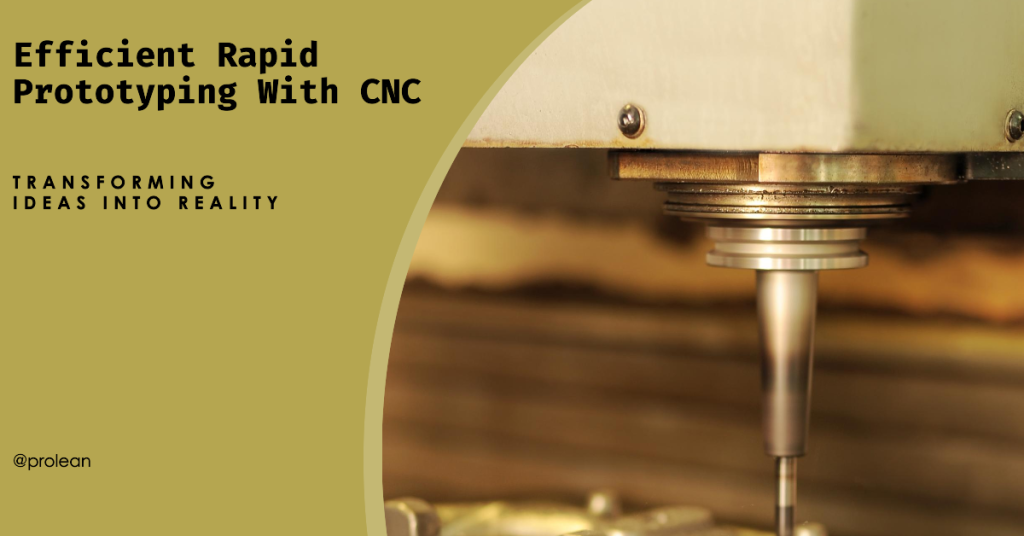
CNC Rapid prototyping provides an idea about functionality, economic feasibility, and the overall scope of the product. There is a common assumption that a prototype is identical to production. This article will brief CNC prototyping process and how you can leverage this technology in your product development projects.
What is Rapid CNC Prototyping
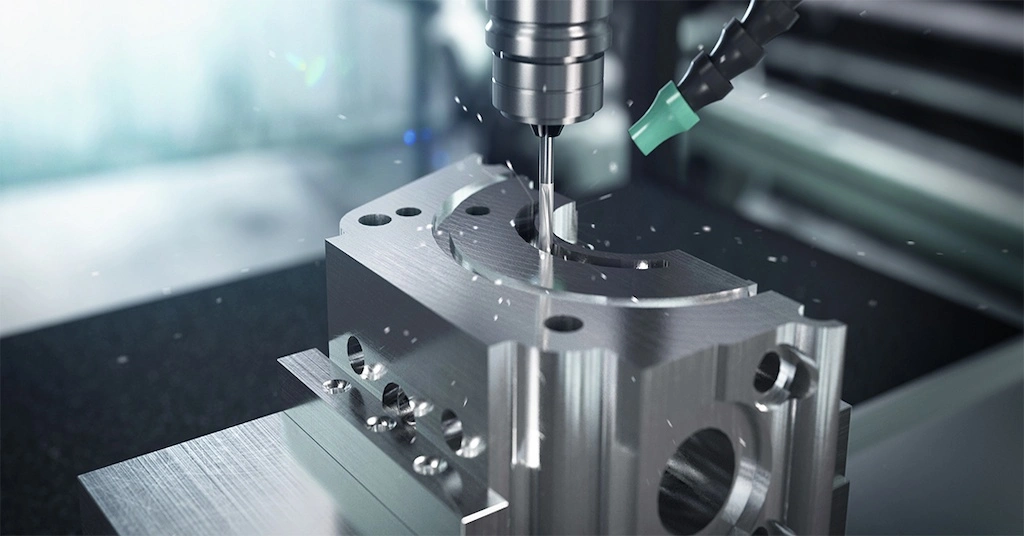
CNC rapid prototyping
First, rapid prototyping is the process of creating functional prototypes for testing purposes (including market testing in some cases) using a streamlined production process in the shortest possible time. Typically, 3D printing is used to create rapid prototypes. However, CNC machining is also popular in rapid prototyping as 3D printing is limited to high-performance alloys and can not maintain structural integrity.
Rapid CNC prototyping uses various machining processes, milling, drilling, tapping, threading, grooving, and many more. First, CAM software finds the optimal machining path, and CNC machines execute that information after setting the appropriate tool and clamping the workpiece.
It means you get options for numerous machining operations for prototype manufacturing, which provides design flexibility to engineers.
- Material Versatility: CNC machines can work with metal, alloy, plastic, composite, and other materials.
- Cost-effective: Producing a few prototypes with CNC is cost-effective, and there is also an easy scaling option for you ahead.
- Surface Finish: CNC machines provide uniform surface texture for prototypes.
- Structural Integrity: CNC prototypes keep the original properties of the workpiece intact as it is a subtractive manufacturing approach.
- Defects and Other Issues: You can easily detect various defects in your design with CNC prototyping.
Moreover, Rapid prototyping gives the rooms for future scalability. After continuous testing and fininding the fine tue solutions , it can easily sacle-up the production, from prototyping to low volume manufacturing to medium volumes to finally mass-production. Meanwhile, the scaling is costlier as it does not need the separate toling and procedures.
The CNC Prototyping Operations
The CNC prototyping utilizez various machining operations, including CNC milling, turning, Drilling, etc. For these processes, separate toolings are requires, whereas some rqupment can perform all of these operations.
1. CNC Milling
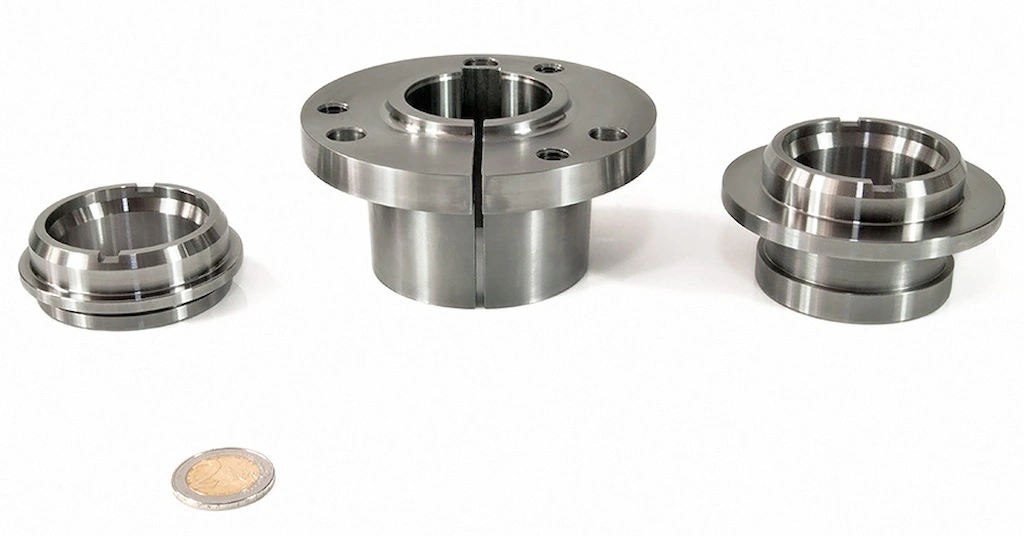
CNC milling prototypes
It is the machining process where rotating cutting tools are responsible for mateial removal from stationary work. The multi-axis CNC mills , 3 a-xis, 4-axis, and 5-axis can craft highly intricate prototypes with precision. It cut, flat, drill, tap, bore, and performs other many operatons. CNC Milling Prototyping can be used for flat and complex CNC machined prototypes.
2. CNC Turning
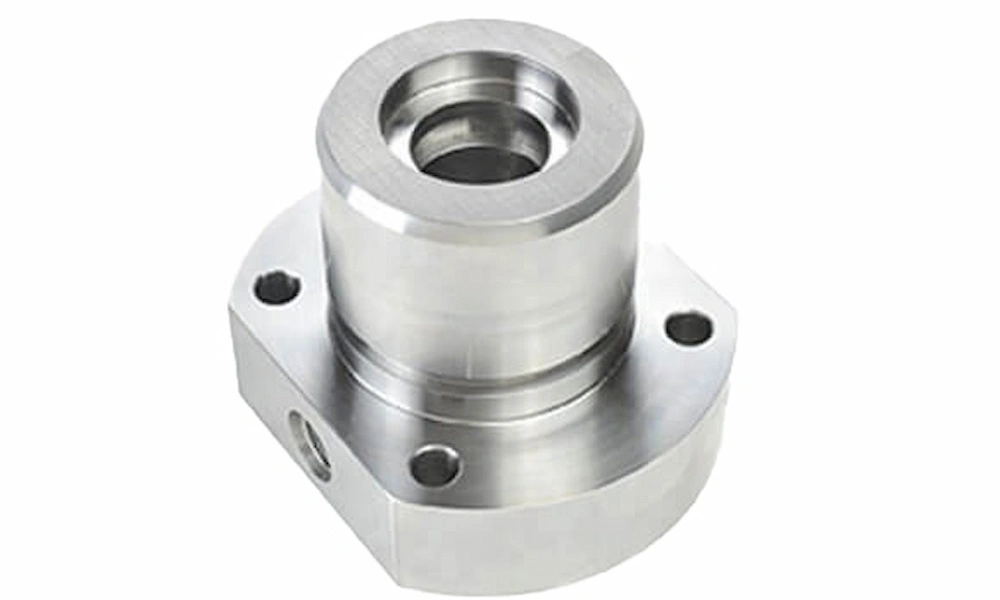
CNC lather or turning centres performs the turning operations, where maching tool feds the rotating work and removes the material from surface until desired geometry is achived. It is ideal for cylindrical ( axially symmetrical ) prototypes. Moreover, turning uses the singl-point cutters. They facilates the creation of linear patterns or features on the cylindrical surface.
3. CNC Turn-Milling

It is the combination of CNC turning and milling, allowing the complex and irregular contours. Here, both workpiece and cutting too can rotates. Infact, the tun-mill machines can use mutiple tools to tackle the challenging geometries. It can be costlier than regular machining processes and best suits for the high-performence and preicion sensitive prototypes.
Steps Involved in Rapid Prototyping with CNC
Developing a prototype with CNC machining involves several steps, from designing to surface finishing. Meanwhile, each step is essential to achieve the intended specifications on the Prototypes.
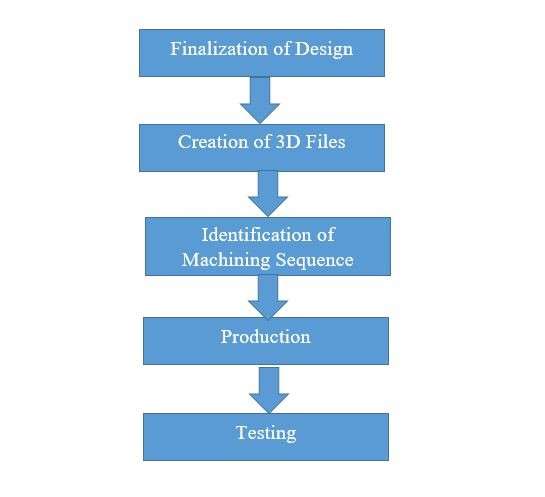
Chronological steps of CNC rapid prototyping
The following are the steps of the CNC prototyping process;
Step 1: Finalization of the design
Finalization of the design is the first step for prototyping with CNC machining. As we all know, CNC machines create the parts from the uploaded 3D model (or 2D drawing) that need to be finalized. In this step, designers and expert engineers create multiple possible designs without altering the functionality of required parts or products. The design includes complete dimensions, tolerances, features, and positioning. Once all the designs are ready, expert engineers select the few best designs for further proceeding.
Step 2: Creation of Technical-Drawing(3D model or 2D drawing)
CNC machines work on 3D files, such as CAD designs. Therefore, it is necessary to transform the chosen designs into 3D files like DWG and SLDPRT. All the dimensions, tolerances, features, and aesthetic requirements should be examined and validated according to the needs of the finished product while developing the 3D file.
Step 3: Identifying the Machining Processes
In this stage, the machining steps are identified and finalized based on the 3D design. Identifying the manufacturing sequence is essential to optimizing the time and material used for production. CNC machines can perform many tasks, including routing, CNC turning, drilling, and CNC milling. Therefore, it is necessary to decide which procedures were required and in what order, depending on the features included in the design.
Step 4: Production

CNC machining operation
The numerical control panel receives the uploaded CNC program when created. The machine is operated when the workpiece is mounted on the tool.
Once the machine runs, it completes all machining operations following the input settings. After multiple CNC machining operations, the desired prototype is produced. If the prototype has multiple parts, it requires a separate prototype and assembly later. This step is necessary for the prototype, which includes mechanical linkage and interconnected components.
Step 5: Testing of Prototype
After production, the prototype undergoes testing, which is the most crucial step of rapid prototyping with a CNC machine. In this phase, the prototype’s functionality and all possible failure situations are tested.
Several other factors, such as CNC machining defects, durability, and overall efficiency, are analyzed in the testing phase along with functionality. After conducting the testing, the production expert approves the prototype for further production. If the prototype fails to fulfill the requirements, alternative designs are analyzed and go for production by following the same sequence of rapid prototyping.
Try Prolean Now!
Advantages of Prototyping with CNC
Rapid prototyping with CNC machining offers various advantages, from material selection options to flexibility in modification. Let’s overview some of them in detail.
1. Diverse Working Materials
Unlike additive manufacturing approaches like 3D printing, CNC machining is compatible with a wide range of materials. It can work with difficult-to-machine materials. Rapid prototyping With CNC machining provides the flexibility to the developers to choose the materials. It is also easy to understand the performance, economic feasibility, and appearance when made with different raw materials.
Our company offers a wide range of materials for rapid CNC Machining Services, following are some common CNC Machining materials;
2. Accuracy with Prototyping
Since rapid prototyping requires accurate manufacturing, CNC machines can create parts with a high degree of accuracy. Because of the automated production, tight tolerance is easily achievable with each machining operation, such as cutting, drilling, turning, routing, and many more. CNC tolerance of ±4 μm is readily achievable, which is accurate enough for almost every type of part and product.
If we compare CNC rapid prototyping with conventional approaches, it is far more accurate. It eliminates the risk of human error, and exact parts can be created as uploaded 3D designs.
3. Quick Lead Time
Because of the automatic production nature, CNC machines create prototypes in a few hours. However, the complete process from design to testing can take a few days.CNC machines reduced manufacturing and assembly time. All the tools and set-up work in a quick manner. Spindle speed, feed rate, and other circumstances do not restrict the production time of the prototype.
It offers a quick lead time and allows developers to test the prototype in a short time. It is highly advantageous to modify in case of any defects. prototyping with CNC is crucial, especially for developers who want to maintain their market advantage and outperform rivals.
4. Cost-Effective
Cutting Tool changes are not frequently necessary when developing the prototype with a CNC machine. This phenomenon shortens production time. With the ability to manage resources and quality, the cost of prototyping was reduced significantly. So, it is a cost-effective approach to prototype development.
5. Easy for Modification
Since CNC prototyping is a speedy process, it enables engineers to modify the parts and products in a matter of hours in case of flaws or functional deficiencies. Developers can rapidly swipe the models after testing. It simplifies testing and reduces the possibility of error.
6. Easy to Change
CNC machines are completely computer-controlled systems that enable quick changes in the design into CNC G codes and M codes. If you use the concept of continuous improvement, you may quickly adapt and modify your prototype. On the other side, it will cost more to alter and change the prototype using different techniques, such as 3D printing and injection molding. Quick design and program changes save not only money but also time.
7. Outstanding Result
CNC machine offers high-quality manufacturing for a few to hundreds of prototypes. The finished CNC machined prototypes become functional and high strength. The as-machined surface finish also provides roughness in the range of Ra 3.2 micrometers, which is pretty well compared to other approaches like 3D printing (Ra 15 micrometers).
8. Complex Prototypes
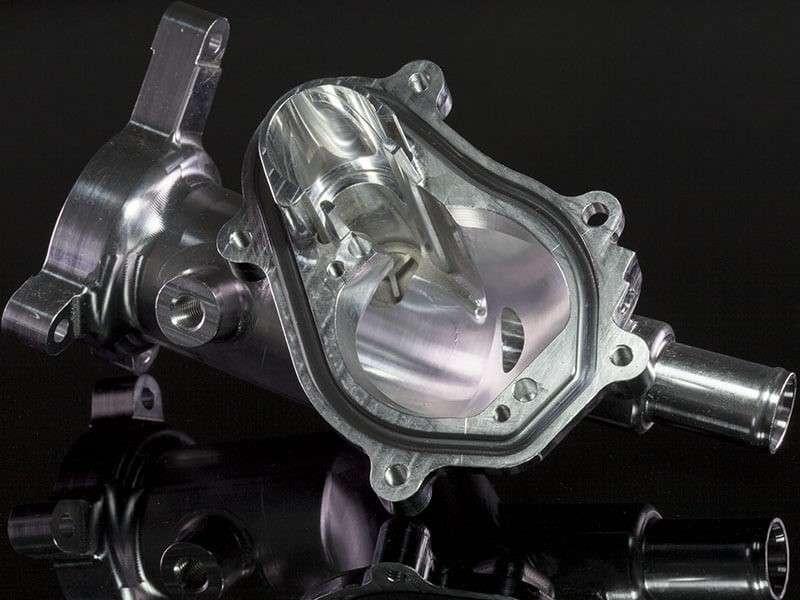
Complex prototype of automobile part made with CNC
Prototype with complex geometries is easily created with a range of CNC machining operations, such as milling, drilling, turning, routing, and many more. It also offers precision in complex parts because of the automated production.
Disadvantages of CNC Prototyping
There are only two major disadvantages of CNC machining on rapid prototyping, Material wastage & restriction for some features. As a subtractive manufacturing method, CNC machining produces parts by removing materials from the workpiece.
The material gets wasted during the removal process in the form of chips. In essence, you require more material than you will ultimately use. Next, some hidden geometries can be challenging to produce as the tool goes from top to bottom.
Applications of Rapid CNC Prototyping
CNC prototypes are used across different industries to test the nee designs and any changes or optimization in existing designs. So, automotive, aerospace, defense, medical, and many other industries prodce protoypes wtht the rapid cnc machining.
Here are the most common industries;
Automotive
Every vehicle manufacturing, weather a bike, car, truck, or buses requires the testing and refining of their components designs. So, the components can perform the intended task and can be reliable for long time. For example, suspension components, transmission gears, engine parts, etc.
Aerospace
The precision and reliability of each components is essential for aerospace safety. Therefore, the aerospace manufacturing industry heavily use rapid CNC prototyping to ensure the highest quality and safety standards. Some CNC machied prototype examples are manifolds, bushings, wingspars, fuseglass parts, proprller rotor components, etc.
Medical
It is another industry where the precision and performance are essential for patient saftey and coreect digonostic results. CNC rapid machining is used in prototyping of various equipment components, surgical instruments, and medical impants.
Some examples of CNC machining medical prototypes are prosthetic components, cranial and maxillofacial implants, orthopedicand dental implants, surgical instruments, custom bone plates, medical device housing, etc.
Defense/ Militiary
Defense industry use CNC prototyping in theri Research and Development (R&D) programms of various defense equipments and warfares. The CNC machines can hadle prototyping of missile components, miltry aircrafts, radar housing, tactical gear prototypes, etc.
CNC Prototyping Metals & Plastics
Mainly metals and plastics are used to produce the rapid CNC prototypes. The choice depends on the final requirement (properties, surface, and features) and capability of available CNC equipments.
Table: CNC Prototyping Materials
| Material | Key Properties | Typical Prototypes | Relative Cost |
| Aluminum | Lightweight, corrosion-resistant, high Machinability | Aircraft components, housings, brackets | $$ |
| Stainless Steel | High strength, corrosion-resistant, durable | Surgical instruments, structural parts | $$$ |
| Titanium | High strength-to-weight ratio, corrosion-resistant | Aerospace parts, medical implants | $$$$ |
| Brass | Good machinability, corrosion-resistant, aesthetic | Decorative parts, fittings, electronic components | $$ |
| Inconel | High-temperature resistance, corrosion-resistant | Turbine blades, exhaust systems | $$$$ |
| Copper | Excellent electrical and thermal conductivity | Electrical components, heat exchangers | $$ |
| ABS | Tough, impact-resistant, easy to machine | Enclosures, prototypes for consumer products | $ |
| Polycarbonate | High impact resistance, optical clarity | Protective covers, lenses, enclosures | $$ |
| PEEK | High chemical resistance, high strength at elevated temperatures | Medical implants, aerospace components | $$$$ |
| Acrylic /PMMA) | Optical clarity, good weatherability | Display cases, lenses, light covers | $$$ |
Why Choose CNC Machining for Rapid Prototyping?
CNC prototypes show how the final product will behave and provide a sample for detailed analysis of intended functions and perfornece. This scientific approach in manufacturing allows to identify the failure points and offers areas for improvement.
If you believe that 3D printing is mainly used for rapid prototyping, your idea may not be accurate, you can check “CNC machining vs 3D printing” for the difference. For rapid prototyping.
Manufacturers and researches prefers CNC machied prototypes where structural integrity, and mechanical properties are critical for their testing. It also provides a variety of material choices, making it simple to choose the one that best matches the desired characteristics and properties. Furthermore, on demand manufacturing services can machine your prototypes if you provide them the design, which makes the prototyping more accessible and fast.
Try Prolean Now!
Order Your CNC Prototypes at Competitive Prices From China
Are you looking for CNC machined prototypes based on your custom design? Many companies across the world turn to rapid prototyping China for cost-effective and high-quality prototyping solutions. ProleanTech is a China-based manufacturing company with advance CNC machining factory to address the prototyping and full-scale production needs of diverse industries.
- 50+ Materials
- Milling, turning, Turn-milling, and other processing operations.
- Client-cententric communication
- Engineers and operators with 10+ years of experience in prototyping
We also run the computer simulation for the sensitive parts to visualize the prototype’s performance before it undergoes production. Our streamlined prototyping process and expert professionals allows us to offer quick lead time even for complex prototypes. So, send us your design and request a quote for our cnc prototype service Today!
FAQ
What is meant by prototyping?
Prototyping is creating parts or an entire product from a concept to see how it will look and work. Prototypes can vary from a few to a hundred, depending on their complexity and the required acceptance tests.
This method is ideal for producing highly accurate and functional prototypes with excellent repeatability, allowing engineers and designers to test and validate their designs quickly and efficiently. Visit https://proleantech.com/cnc-machining/ for more information on CNC machining services.
What are the steps involved in rapid prototyping with CNC machining?
There are five steps: Ddesign finalization, creation of 3D files, identification of machining sequence, production, and testing.
- Create a 3D digital model of your design using CAD (Computer-Aided Design) software.
- Choose the appropriate material for your prototype.
- Find a reputable CNC machining service provider, like ProLean Tech (https://proleantech.com/cnc-machining/), that offers CNC rapid prototyping services.
- Send your 3D model and material specifications to the service provider.
- Review the quote provided by the service provider, and if satisfactory, proceed with the prototyping process.
Why is CNC machining the best approach for Rapid prototyping?
Compared to other approaches like injection molding and 3D printing, it offers a wide range of material options, quick lead time, low cost, flexibility for modification, and precision.
How long did it take to produce a prototype using CNC machining?
The turnaround time for CNC rapid prototyping depends on the complexity of the design, the chosen material, and the workload of the service provider. Typically, a single prototype can be completed in as little as 1-3 days. However, lead times may vary, so it’s best to discuss your specific timeline with your chosen service provider.
How much does CNC rapid prototyping cost?
The cost of CNC rapid prototyping varies depending on several factors, such as:
- Material type and volume
- Complexity of the design
- The required number of prototypes
- Lead time
To get an accurate quote for your specific project, it’s best to contact a CNC machining service provider like ProLean Tech (https://proleantech.com/cnc-machining/) with your project details.


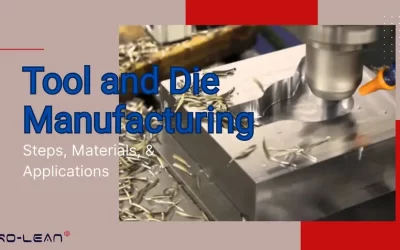

0 Comments